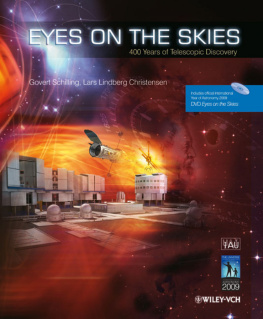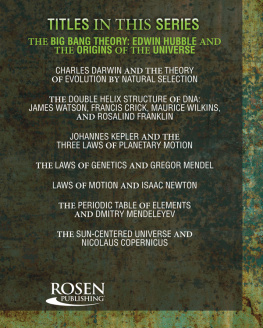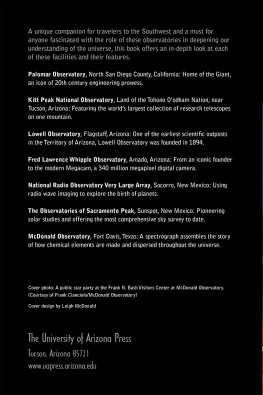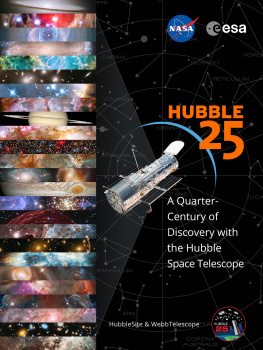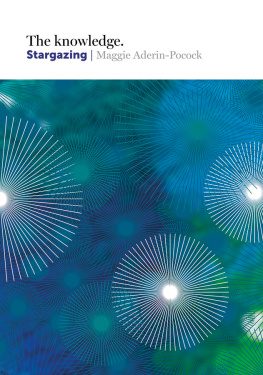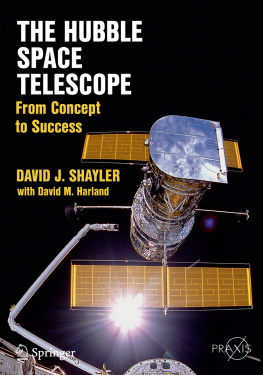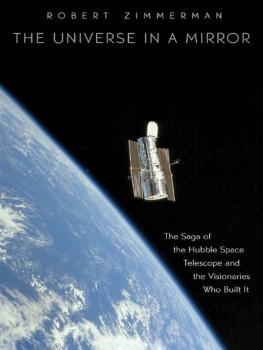
EYES ON THE SKIES
400 Years of Telscopic Discovery
The Authors
Govert Schilling
Amersfoort, The Netherlands
Lars Lindberg Christensen
ESA/Hubble
ESO/ESA/ST-ECF
Garching, Germany
Design and Layout
Martin Kornmesser &
Nuno Marques
ESA/Hubble
ESO/ESA/ST-ECF
Garching, Germany
STAR-FORMING REGION S106 (INSIDE FRONT COVER)
The Subaru Telescope on Mauna Kea produced this deep infrared image of the star-forming region S106. S106 is at a distance of approximately 2000 light-years from Earth. The hourglass appearance of S106 is the result of the way material is flowing outwards from the central star. This infrared image is very sharp and reveals subtle details like ripples inside the nebula.
PINWHEEL GALAXY (INSIDE BACK COVER)
The Pinwheel Galaxys giant spiral disc of stars, dust and gas is 170 000 light-years across or nearly twice the diameter of our Milky Way. The galaxy is estimated to contain at least one trillion stars. Approximately 100 billion of these stars alone might be like our Sun in terms of temperature and lifetime. The high resolution of the Hubble Space Telescope reveals millions of the galaxys individual stars in this image.
All books published by Wiley-VCH are carefully produced. Nevertheless, authors, editors, and publisher do not warrant the information contained in these books, including this book, to be free of errors. Readers are advised to keep in mind that statements, data, illustrations, procedural details or other items may inadvertently be inaccurate.
Library of Congress Card No.:
applied for
British Library Cataloguing-in-Publication Data
A catalogue record for this book is available from the British Library. Bibliographic information published by the Deutsche Nationalbibliothek
The Deutsche Nationalbibliothek lists this publication in the Deutsche Nationalbibliografie; detailed bibliographic data are available on the Internet at .
2009 WILEY-VCH Verlag GmbH & Co. KGaA, Weinheim
All rights reserved (including those of translation into other languages). No part of this book may be reproduced in any form by photoprinting, microfilm, or any other means nor transmitted or translated into a machine language without written permission from the publishers. Registered names, trademarks, etc. used in this book, even when not specifically marked as such, are not to be considered unprotected by law.
Printed in the USA
Printed on acid-free paper
Composition: Hagedorn Kommunikation GmbH, Viernheim
ISBN: 978-3-527-40865-8

STAR TRAILS OVER GEMINI NORTH Star trails majestically arch above the Gemini North Telescope in this long exposure, made on Mauna Kea. Light from the setting Moon is reflected from the right of the dome, while twilight provides a faint lingering glow on the left side. The centre of the dome shows the glow of a small red flashlight.

FOREWORD

We believe that even our most remote ancestors looked up with wonder and awe at the night sky. But, 400 years ago, something entirely new happened: Galileo turned a homemade arrangement of magnifying glasses to the skies, taking advantage of information on advances in spyglasses made elsewhere in Europe. So Galileo was the first to see amazing phenomena: the mountains on the Moon, the phases of the planet Venus, the satellites of Jupiter, spots on the Sun But the essential step taken by Galileo, the most important for us, as astronomers, is that he immediately tried to understand the meaning of what he saw, to translate the beautiful images into facts about the Earth and its position and motion with respect to the Sun; he recognised the Moon as a body akin to the Earth, and he realised that Jupiter and its satellites formed a miniature Solar System.
THE MAGNIFICENT STARBURST GALAXY MESSIER 82 A MULTI-WAVELENGTH VIEW
Three space telescopes capture the fireworks of the active galaxy Messier 82. X-ray data recorded by the Chandra X-Ray Observatory appears in blue and infrared light recorded by the Spitzer Space Telescope appears in red. Hydrogen emission detected by the Hubble Space Telescope appears in orange, while the galaxys blue radiation, also imaged by Hubble, is displayed in yellow-green.
This happened just 400 years ago. Since then astronomers have been following in Galileos footsteps, constantly improving telescopes and instruments, and trying to make sense of it all. The progress has been fantastic! Today, there are many optical telescopes with diameters in excess of eight metres all over the world, supplemented on the ground by radio telescopes and novel detectors of ultra high-energy particles and photons, while satellites pick up other kinds of radiation from the Universe. Space is expensive, but offers the ideal conditions for observations, even in the optical and the infrared, as can be seen from the unique results obtained by the modestly sized Hubble Space Telescope, which complement those of the giant Earth-bound telescopes. These new observations, and the interpretations and theories they have fostered, have not only revolutionised our view of the Solar System, but have turned the entire Universe, its origin, its evolution, the history of its components, gas clouds, galaxies and galaxy clusters, stars, planets in our Solar System and elsewhere, into objects of scientific study.
So, in 2009, in the International Year of Astronomy, we are celebrating Galileos legacy and all the discoveries that have taken place in the intervening years, as well as the explosion of knowledge that we are witnessing now, made possible by new technologies. This book, written by two experienced and talented astronomy communicators, illustrates beautifully the saga of the telescope over 400 years, and the prodigious advances that have been made in understanding the Universe.

Catherine Cesarsky
President of the International Astronomical Union & Director of Research, DSM/CEA-Saclay, France
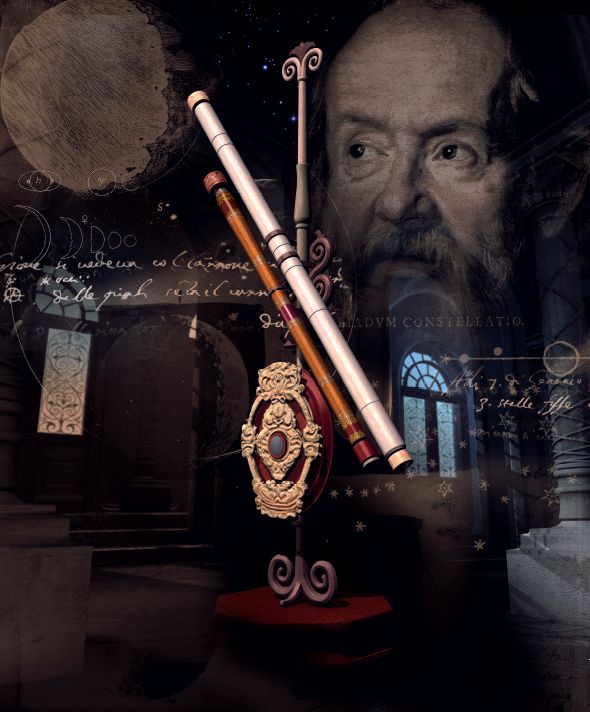
NEW VIEWS OF THE SKIES
ARTISTS IMPRESSION OF GALILEOS FAMOUS TELESCOPES
With his small, homemade telescopes, capable of magnifying objects by a factor of 20, Galileo Galilei made some of mankinds most astonishing discoveries. He observed stars and nebulae and studied Solar System objects like the Sun, the Moon, Saturn, Jupiter and Venus. Although he did not invent the instrument, it was Galileo who truly made the telescope famous.
The telescope is astronomys miracle worker. It reveals faint stars and nebulae and magnifies distant objects. Telescopes take astronomers on a journey to the distant reaches of the Universe, where sparkling galaxies adorn the darkness of the void. But they also serve as time machines, providing scientists with a view of the earliest cosmic eras. No other single instrument has done so much for our view of mankinds place in time and space. Astronomy would barely rate as a science without the telescope. Four hundred years ago the early pioneers began a journey that led from the chance alignment of two simple lenses to todays complex space-based observatories and massive mountaintop mirrors.
Next page
